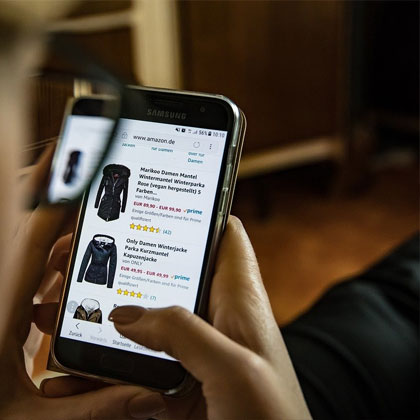When was the last time you had a conversation with your neighbour? Do you know the name of the watchman who guards your society? Or the name of the person who drops the newspaper at your place? (‘Chotu’ doesn’t count, just saying) But I’m sure you would know the name of the person who delivers food to you through Swiggy or would know the name of the Uber driver who drops you home. The point here is, we only seek information that is spoon-fed to us. We communicate digitally more than we do in person. Whether you agree to it or not, you can’t deny Smartphones are a huge part of our daily lives. Smartphone has also made a huge impact in the daily life of an indivisual. The attachment to our phones is a little scary at times.

How often do you check your phone?
According to various studies, half of the population aged 18-34 check their phones as soon as they wake up in the morning. That’s often the last thing they do before sleeping, and the first thing when they wake up. Mobile phones are never off-limits. Be it a bedroom, bathroom, dinner table, family time- they seem to be forever by our sides like our pets. The relationship between humans and mobile phones sounds romantic except for sometimes it really isn’t.

Lifestyle and Mobile
Not to deny, but for many of us, our smartphones are like our lifelines. They help you connect with family and friends from miles apart, deliver news at a moment’s notice and does a hundred other things that make our daily life easy. Everything is on-the-go from checking upon news to booking trips to managing finances. Life becomes standstill without smartphones. The other day, I had to connect to a friend in the States who was getting married and I was not able to attend. I was so glad for these palm-sized devices that I could actually attend the wedding virtually through FaceTime. I felt so blessed to have a cell phone at that moment.
Brands and Mobile
Marketers need to harp on the disruption created by these devices and deliver content that fits into their routine. Millennials are the most active groups in the mobile sphere and many brands are revamping their strategies to target these younger consumers. They are confident, fierce and open to change. They are the first generation to grow up with technologies like mobile phones, internet and social media. As trendsetters, brand strategies need to be more inclined towards their usage pattern and needs.
This generation spends a lot of time checking social media feed and interacting with mobile apps. It’s an extension to their personalities. In this digital age, mobile complements traditional advertising such as radio, television etc. Mobile is an interactive platform where brands can have a conversation with customers. They can tweet a complaint, vote for their favourite shows, or participate in a campaign. There are massive movements that have come into power solely via social media awareness and outrage. Mobile phones have bridged the gap between the user and the brands.
With the increasing use of mobile and internet, mobile marketing has become a revolutionary trend. People are always in search of quick service anywhere, anytime. Companies can directly interact with the customer, provide them with services and take feedback within no time. Most of the websites are visited mostly via mobile in comparison to the desktop. All brand strategies are crafted to attract more users from mobile. App-based marketing, in-game marketing, QR codes, location-based marketing, mobile search/image ads, SMS marketing are a few marketing strategies that help target customers. Now you know, why your Facebook and Instagram feed is full of ‘sponsored’ ads that disturb your browsing.
Shopping and Mobile
Did you ever imagine shopping and mobile will be even remotely related? Mobile phones were solely invented to make calls and send text messages. But thanks to the invention of smartphones’ apps, activities like shopping has never been so easier. Most of the famous brands have come up with an array of options and offers to take full advantage of this new shopping trend. The online retailers have adjusted their strategies to align their focus on the customer’s preferred way of shopping. It is much easier to reach for your phone, do a few clicks, and buy something, than logging into your desktop. People prefer shopping from their phones because:
- It’s faster and more convenient
- Collect reward points
- Better deals and offers
- Shopping on-the-go

It’s all about living life on-the-go. The mobile phone is a different world in itself. You interact, communicate, and learn with your fingertips. With the increasing use of social media apps, the world is becoming smaller and closer. On a good note, people connect with each other on a global level more than before. Even the smallest Instagram upload can make millions of people worldwide come together for a cause.
The ocean is vast and deep while we just float atop. Mobile is one of the few channels that has achieved tremendous scale and is yet growing day by day. There is still more to explore, and marketers will find different ways to reach their audiences. But that doesn’t mean the way we use Smartphones should take over our life. A great way to have a healthy relationship with your phone is to set limitations on the usage in your daily routine. It’s about finding the right balance between the online and the offline world.




















































































































